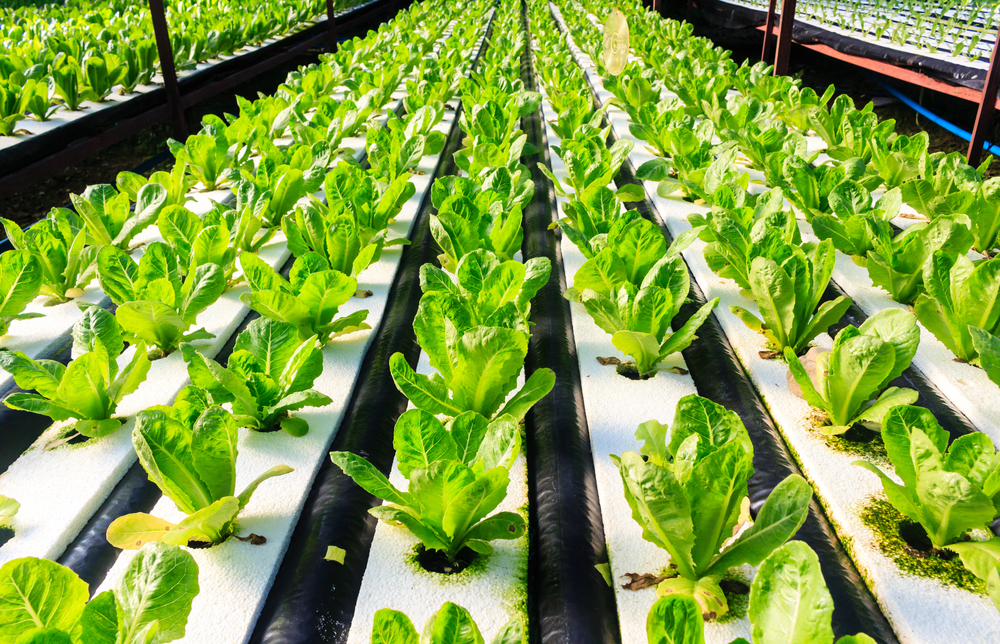 Loading... Please wait...
Loading... Please wait...Save Money. Grow Your Own!
Fast Plain Box Shipping.
We ship to the US & Canada.
Grow Your Own!
Step by Step Guide: Install Tubing for a Flood and Drain System
Posted on 5th Jul 2016
Are you looking at putting in a ‘flood and drain’ or ‘ebb and flow’ system in a part of your home or business space? You might want a simple step-by-step guide to help show how to route tubing for these systems.
It's not extremely complicated. The tubing consists of an inlet for water and another small hole for an overflow drain. The idea with flood and drain is simple -- at a certain point in time when you want plants to digest nutrients, you flood the plant tray with water so that it reaches plant roots. After a certain amount of time, you drain it back out again. Flood and drain can be effective in preventing mold or mildew conditions that can happen with plant roots sit in water too long or in poor environments. It can also be an efficient way to set up and construct a hydroponic system.
Here are some of the basic steps involved in putting in tubing for a flood and drain system.

Get your container
A flood and drain hydroponic system container can be simple. It can be a Rubbermaid container or some other type of plastic container. Some growers like to use a hard plastic bin, the same kind that you might fill up with old sweaters or vinyl LPs or other things that you have lying around the house. When these are clean and in good condition, they can be perfectly acceptable containers for a flood and drain hydroponic system.
Fill with ProMedia
you want to fill the container with a certain amount of her immediate. Rare is use things like clay pellets and rock. The idea is that the plant roots was sitting here and the water will flood engineers.
Collect parts
You'll need two hose connectors, the inlet and the overflow. You might also have a collection of washers and gaskets to make sure the settings are right.
Install inlet hole
The inlet hole doesn't have to be exact, just so you can get the plastic piece inside nicely. It does have to seal, so that no water can leak out. Here, we recommend using a well rated drill rather than some kind of blunt implement to make the hole. There is the possibility of shattering the plastic or making a hole that doesn't seal correctly. You want to also have a filter or screen on the inlet tube connector.
Install overflow
The overflow has to be a more exact hole if you're using a simple hose. Again, you can have a filter on the inside of the overflow tube, which will project from the side into another container. One hack with overflow tubes is to get a bigger tube if you accidentally make the hole in the container too large.

Hook up pump
The pump will sit below the growing media in the reservoir area. You have the tube leading up and out of the container. Make sure the pump and everything else is fitted and fastened correctly.
Test the system
The last step is to test this hydroponic system to make sure it's working properly. Again, you want to look for any leaking or dripping around the container that can indicate parts aren’t connected correctly.
As you go forward with flood and drain cycles, you have to keep an eye on the water. Make sure it has the right pH value and not too much total dissolved solids. You'll also want to control the temperature and humidity of the grow space as well as possible.
All of this is part of setting up capable hydroponic systems that can stand the test of time and deliver the fresh produce that you need from multiple plant cycles. You may need a lot of accessories and extras. You might be looking at things like odor filters or even stealth growth systems. You might want elaborate compact grow boxes that are already set up with everything you need to grow, or you might want a bigger grow tent to accommodate a bigger number of plants. You might be looking at carbon dioxide additions or other accessories that can help plants grow better.
Either way, with a simple flood and drain system in place, you can start out as a hydroponic beginner and start that process of trial and error where you'll learn how to grow that fresh produce right in your own home or business area.
